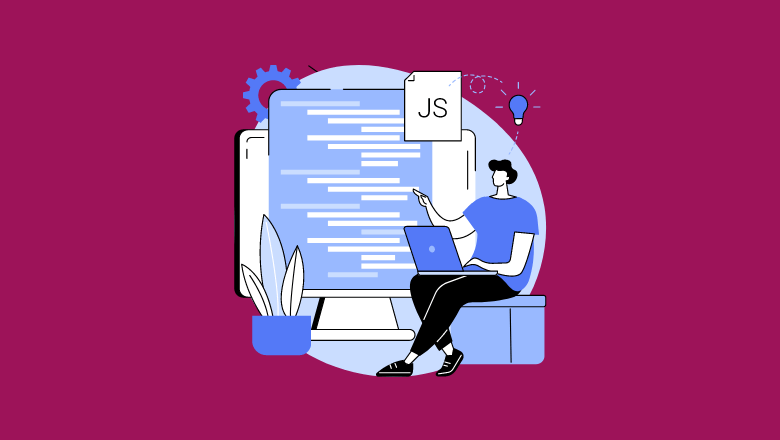
Wondering how to hire a JavaScript React Developer? As the demand for software development continues to grow, finding the right JavaScript React developer for your business can be challenging. With React, developers can create complex and dynamic web applications with JavaScript.
We will explore how to hire a JavaScript React developer and ensure they are the right fit.
Define Your Project Needs
Before you search for a JavaScript React developer, defining your project needs is essential.
- What type of application are you building?
- What features does it need?
- What are the timelines for development and deployment?
These questions will help you determine the level of experience and skill set required for your ideal candidate.
Create a Job Description
It’s time to create a job description once you know what your project needs.
This document should outline the requirements for the position, including experience, technical skills, and soft skills. Be specific about what you’re looking for in a candidate and what they can expect from the role.
If you’re writing a job description, consider including these elements:
- Job title and description
- Required experience and education
- Technical skills and languages required
- Soft skills required (e.g., communication, teamwork, problem-solving)
- Responsibilities and Duties
- Benefits and Compensation
Post Your Job Listing

Now that you have a job description, it’s time to post your listing. You can use various job boards, social media platforms, and other online resources for advertising your job opening. Be sure to include a clear and concise job title and description to attract qualified candidates.
Some popular job boards to consider include:
- Indeed
- Glassdoor
- ZipRecruiter
- Upwork
Review Resumes and Portfolios
Once you start receiving resumes and portfolios, it’s time to review them. Look for candidates who meet the qualifications outlined in your job description. Please pay attention to their experience, skills, and any relevant projects they’ve worked on.
Some questions to consider when reviewing resumes and portfolios include:
- Does the candidate have the required technical skills?
- Have they worked on similar projects in the past?
- Do they have experience with the tools and technologies needed for your project?
- Do they have strong communication and teamwork skills?
Conduct Interviews
After reviewing resumes and portfolios, it’s time to conduct interviews. You will have the chance to ask questions and get to know the candidates better during this time. Be sure to ask technical and behavioral questions to understand the candidate better.
Some questions and responses to consider when interviewing candidates include:

Tell me about your experience with React?
When you ask this question, “Tell me about your experience with React,” you are looking for a detailed explanation of candidate’s familiarity with the React library and how they have utilized it in past projects.
Here is an example response:
“I’ve been working with React for the past six years, and during that time, I’ve built various web applications using the library. I am well-versed in React’s core concepts, such as JSX, components, and state management.
I worked on a single-page application for a financial services company in one project. The application was built entirely with React, and I used Redux for state management.
One of the significant challenges of the project was to create a highly responsive and interactive user interface, which I could achieve using React’s virtual DOM and event-handling features.
In another project, I built a progressive web application (PWA) for a retail company. The PWA was designed to work seamlessly across different devices, including desktops, tablets, and mobile phones.
I used React and several other technologies, such as React Router and Redux Toolkit, to create a fast and smooth user experience.
Overall, I feel comfortable working with React and am eager to learn more about the latest features and best practices.
I’m also familiar with the React ecosystem and have used several popular React libraries, such as Material-UI and Styled Components, to help speed up development.
Can you walk me through your experience working on similar projects?
“In my previous role as a React developer at ABC Company, I worked on a project that involved building a single-page application for an e-commerce website. The website had a complex product catalog with multiple filters and sorting options, and we needed to ensure that the website was fast and responsive.
To achieve this, we implemented various performance optimizations, such as lazy loading images and code splitting.
I have also worked on several other React projects, including a social networking platform and a real-time chat application. In both projects, I had to work with complex data models and implement real-time updates using WebSockets.
In terms of my process, I typically start by understanding the project requirements and defining the scope of work. From there, I create a project plan that outlines the key milestones and deliverables.
I then work closely with the project team, including designers and other developers, to ensure the project is completed on time and to a high standard.
Overall, I have extensive experience working on React projects of varying complexity and would be happy to discuss my experience in more detail.”
How do you approach problem-solving?
“When it comes to problem-solving, I usually follow these steps:
Identify the problem: I ensure I fully understand it before attempting to solve it. I ask questions and gather as much information as possible.
Break down the problem: I break the problem down into smaller, more manageable pieces. This allows me to focus on one part of the problem at a time.
Research: I research possible solutions or approaches to the problem. This could involve reading documentation, searching online resources, or consulting with colleagues.
Develop a plan: I develop a plan of action based on my research. This plan should outline the steps I will take to solve the problem, including any potential roadblocks or challenges that may arise.
Execute the plan: I follow the developed plan and work through each step. I keep track of my progress and make adjustments as necessary.
Evaluate the solution: Once I have solved the problem, I evaluate it to ensure it is the best possible. I look for any areas of improvement and learn from the experience to improve my problem-solving skills for future challenges.
My problem-solving approach is a combination of research, planning, and execution. I believe in being thorough and methodical to ensure the best possible outcome.”
How do you handle conflicts or challenging team members?
“When handling conflicts or challenging team members, I first try to understand the root of the problem. Communication is vital in any team, so I actively listen to everyone involved to understand what’s happening.
Once I clearly understand the problem, I work with the team to develop a solution that addresses everyone’s concerns and needs. A compromise that works for everyone and makes everyone feel heard and valued.
If the conflict is between two team members, I may facilitate a conversation between them to help them work through their issues. Sometimes, just talking things out can help clear misunderstandings and resolve conflicts.
If a problematic team member is causing issues, I address the problem as soon as possible. I may schedule a one-on-one meeting to discuss their behavior and find ways to improve the situation. It’s essential to approach these situations with empathy and understanding while remaining firm in expectations and boundaries.
I aim to create a positive and productive team environment where everyone feels valued and respected.”
Here are some simple React-specific FAQs:

What is React?
Using React, you can build user interfaces in JavaScript. It was developed by Facebook and is now widely used by developers worldwide. React allows you to create reusable UI components, manage state, and handle interactions declaratively and efficiently.
What is JSX?
You can write HTML-like code in your JavaScript files using JSX, a syntax extension for JavaScript. It will enable you to create and manipulate UI components more readably and intuitively easily.
How are states and props different?
State and props manage data in React, but they serve different purposes. State manages data internal to a component, while props pass data from parent to child components.
What is the virtual DOM?
The virtual DOM is a concept in React where a lightweight representation of the actual DOM is created in memory. When state or props change, React compares the virtual DOM with the previous version to determine what needs to be updated in the actual DOM.
This approach is more efficient than updating the entire DOM tree, which can be slow and resource-intensive.
What is a higher-order component (HOC)?
In higher-order components, a part is taken, and a new part is returned. HOCs often add reusable logic or behavior to components, such as authentication, data fetching, or event handling.
What is Redux?
JavaScript applications often use Redux to manage state. It provides a centralized store for managing the application state, with actions and reducers to update the state predictably.
What is React Router?
React Router is a routing library for React applications that allows you to handle navigation and URL routing declaratively. It provides a way to map URLs to specific components and manage browser history.
How do React and React Native differ?
JavaScript library React for building user interfaces; React Native for building native mobile apps. React Native allows you to write JavaScript code that runs natively on iOS or Android devices, while React is typically used for creating web applications.
Assess Cultural Fit
In addition to technical and soft skills, assessing cultural fit is vital. You want to ensure the candidate aligns with your company values and works well with your existing team. Consider inviting the candidate for a team lunch or informal meeting to understand their personality and work style better.
Make an Offer
After completing the interview process, it’s time to make an offer to your top candidate. Include the job details, including compensation, benefits, and start date. If the candidate accepts the offer, you can begin the onboarding process.
Wrapping up hire a JavaScript React Developer
Hiring a JavaScript React developer requires careful consideration of your project needs, job description, and candidate qualifications. Following these steps, you can attract qualified candidates and ensure you hire the right person for the job.
Remember to assess technical and soft skills and cultural fit to find a candidate who can thrive in your organization.
Christopher is a distinguished technical author renowned for his expertise in scientific computer science. With an illustrious career as a development manager at Cisco, Sun, and Twitter, he has consistently demonstrated exceptional leadership and technical acumen in delivering successful projects.
Christopher’s technical writing reflects his extensive knowledge and practical experience in scientific computer science. His ability to effectively communicate complex concepts to diverse audiences has earned him recognition within the scientific community. Through his publications, Christopher aims to share his insights, foster collaboration, and contribute to the advancement of the field.
As a technical author, Christopher remains committed to staying at the forefront of emerging technologies and driving innovation in scientific computer science. His expertise in Javascript development, coupled with his experience as a development manager, positions him as a valuable resource for professionals seeking guidance and best practices. With each publication, Christopher strives to empower readers, inspire creativity, and push the boundaries of scientific computer science.







